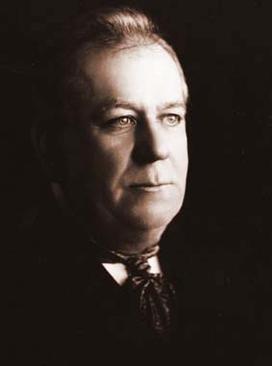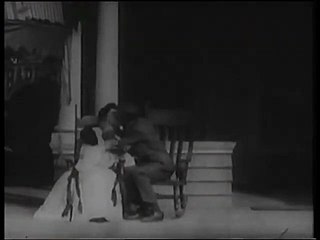
The 1896 version of La Fée aux Choux is a lost film directed by Alice Guy-Blaché that, according to her, featured a honeymoon couple, a farmer, pictures of babies glued to cardboard, and one live baby. The 1900 La Fée aux Choux and the 1902 Sage-Femme de Première Classe are frequently confused with the original lost film, which is arguably the world's first narrative film, and the first film directed by a woman.

Alice Ida Antoinette Guy-Blaché was a French pioneer film director. She was one of the first filmmakers to make a narrative fiction film, as well as the first woman to direct a film. From 1896 to 1906, she was probably the only female filmmaker in the world. She experimented with Gaumont's Chronophone sync-sound system, and with color-tinting, interracial casting, and special effects.

The Narrow Margin is a 1952 American film noir starring Charles McGraw and Marie Windsor. Directed by Richard Fleischer, the RKO picture was written by Earl Felton, based on an unpublished story written by Martin Goldsmith and Jack Leonard. The screenplay by Earl Felton was nominated for an Academy Award.

Murder on the Orient Express is a 1974 British mystery film directed by Sidney Lumet, produced by John Brabourne and Richard Goodwin, and based on the 1934 novel of the same name by Agatha Christie.

William Haggar was a British pioneer of the cinema industry. Beginning his career as a travelling entertainer, Haggar, whose large family formed his theatre company, later bought a Bioscope show and earned his money in the fairgrounds of south Wales. In 1902 he began making his own short fictional films, making him one of the earliest directors in Britain. His films were shown worldwide and his short Desperate Poaching Affray is believed to have influenced early narrative drama in American film, especially in chase genre. As a director Haggar is recognised for his use of editing and the depth of staging in his melodramas and crime films.

The Lady Vanishes is a 1938 British mystery thriller film directed by Alfred Hitchcock, starring Margaret Lockwood and Michael Redgrave. Written by Sidney Gilliat and Frank Launder, based on the 1936 novel The Wheel Spins by Ethel Lina White, the film is about a beautiful English tourist travelling by train in continental Europe who discovers that her elderly travelling companion seems to have disappeared from the train. After her fellow passengers deny ever having seen the elderly lady, the young woman is helped by a young musicologist, the two proceeding to search the train for clues to the old lady's disappearance.
On Such a Night is a 1955 British short semi-documentary film directed by Anthony Asquith which offers a snap-shot of the Glyndebourne opera house in the 1950s, including extracts from Le nozze di Figaro, and a fictional first visit to the opera house by an American. The film was "very discreetly aimed at potential American audiences fascinated by British eccentricities".

Take My Life is a 1947 British crime film directed by Ronald Neame and starring Hugh Williams, Greta Gynt and Marius Goring. It was adapted from Winston Graham's 1947 novel of the same name.

A Honeymoon Adventure is a 1931 British thriller film directed by Maurice Elvey and starring Benita Hume, Peter Hannen and Harold Huth. Written in collaboration by Rupert Downing and Basil Dean, it The film was shot at Beaconsfield Studios. Location shooting, including the railway scenes took place in Scotland.
Mary Sophia Money is the victim of an unsolved murder in Surrey, England, from 1905.

On the afternoon of 23 March 1988, Deborah Linsley was murdered on a train between Petts Wood and London Victoria stations in Greater London. Although there were about 70 people on the train, and Linsley apparently fought and injured her attacker, only one passenger reported hearing anything suspicious. The killer has not been identified. Stored blood evidence from the scene allowed the case to be re-examined a decade later using DNA technology, and in 2002 it was re-opened with a major publicity campaign. A police reward is on offer.

Fear No More is a 1961 American thriller film directed by Bernard Wiesen and starring Mala Powers, Jacques Bergerac and Anna Lee Carroll. It was based on a 1946 novel of the same name by Leslie Edgley.

Alfred Collins was a British theatre actor who later became a silent film director and actor. His shorts include Rescued by Lifeboat (1906), The Lady Athlete; or, Jiu-Jitsu Downs the Footpads (1907), and The Dancing Girl (1908). Early films were produced with nitrate film and deteriorated in their storage tins, sometimes catching fire, so most of them are lost.

The Child Stealers also known as The Kidnapped Child or Child Stealing is a 1904 British silent crime film about kidnapping, directed by William Barker and produced by the Warwick Trading Company.

The Lost Child is a 1904 American short silent comedy film produced by the American Mutoscope & Biograph Company and directed by Wallace McCutcheon, Sr.

The Widow and the Only Man is a 1904 American short silent comedy film produced by the American Mutoscope & Biograph Company and directed by Wallace McCutcheon, Sr.

The Kleptomaniac, is a 1905 American silent drama film, directed by Edwin S. Porter partly filmed on location in New-York denouncing the discriminatory treatment of the poor by the justice system. It is one of the first American social drama and Courtroom drama.

The Train Wreckers is a 1905 American silent drama film, directed by Edwin S. Porter showing how the daughter of a railway switchman and lover of a locomotive engineer is defeating outlaws trying to derail a train.

Rescued in Mid-Air is a 1906 British short silent drama film directed by Percy Stow and produced by the Clarendon Film Company. The film seems to be the oldest one featuring an airborne rescue operation.

The Bell Ringer's Daughter, is a 1906 French silent short film directed by Albert Capellani. It is a melodrama about a young woman seduced and abandoned with her baby.


















